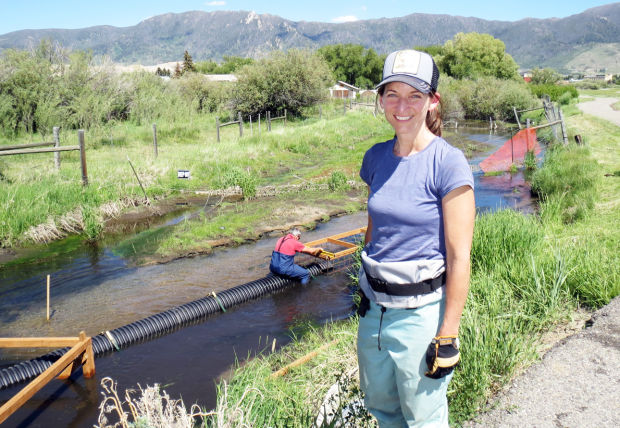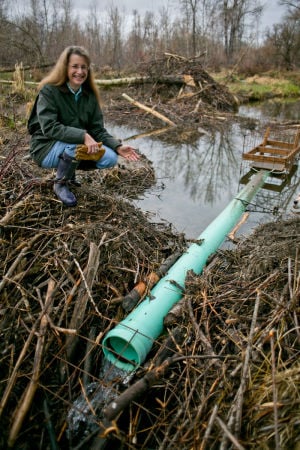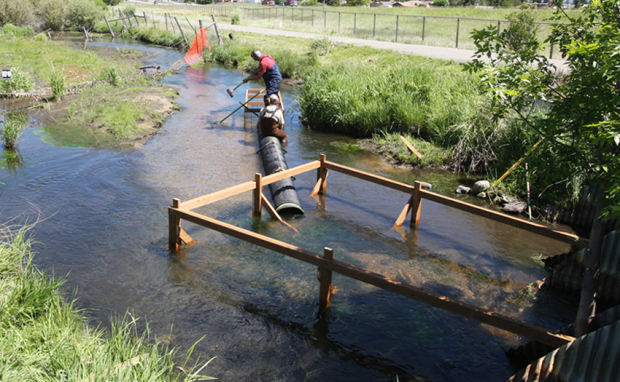Exactly a month ago, I posted about the wildlife refuge in Montana that was saying it was trapping beavers to protect their ducks. An advocacy group was arguing that this was yet another reason to ban traps in the state, and wrote letters to the editor and refuge. I wrote a detailed post about the issue here, and wrote them with information about how to solve this problem by bringing in local Amy Chadwork to work with Skip Lisle and install a beaver deceiver.
Guess what’s happening?
Trapping
Beaver deceiver FTW
To that end, Footloose is now in talks with the refuge to help install a non-lethal device called a “beaver deceiver”—a trapezoidal fence that angles out and away from the mouth of a culvert, discouraging beavers from damming. The design was developed by Vermont wildlife biologist Skip Lisle. Beaver deceivers have proven successful in protecting culverts in Washington state; Lisle also partnered with Missoula ecologist Amy Chadwick to install such a structure near Butte last year.
Poten adds that Footloose—which intends to push its own anti-trapping ballot initiative in 2016—may also help the Lee Metcalf refuge by installing fencing around several larger cottonwoods to protect them from beavers.
Not only is the reserve doing the right thing, (albeit reluctantly) the reporter is entirely accurate and well informed! Get the champagne, this sounds like a total victory! unless….
While Reed does feel a beaver deceiver could aid maintenance in certain areas, he says it won’t solve problems with beavers refuge-wide. The refuge’s mandate is to manage for migratory birds. It may not be his preferred option, but Reed says trapping “is a management option we’ll continue to evaluate.”
Ahhh, what was it that Hamlet said?
For virtue cannot so inoculate our old stock but we shall relish of it
Which basically means that Mr. Reed may look a little bit smarter about beavers when people are watching, but he’s still massively uninformed so keep his Montana feet to the fire.
Yesterday I dutifully made space for miles of new kit footage on my computer by installing not one, but two TBs of space. The beavers decided not to reward me with a kit yet, but they did think I was worthy of grooming footage, which I’ve never gotten in 7 years of beaver watching. So I’m pretty happy. In fact, eagle eye Jon just called me to announce that you can see teats in this footage, so that’s mom! Look above where her paw is.

The family is still in full force, and the secondary dam is amazingly maintained.
We counted six beavers last night- as many as four at once! They are obviously trying to secure the area, but two tail slaps meant no kits for us. There is so much traffic on the bridge, including two rottweilers, four bicycles and a baby, because the beavers are so visible. I was jealous for the lonely days of winter. I’m starting to wish there was a librarian saying SHHHHHH at each end because I don’t want anything to spook them!
- Grooming on the dam – Photo Cheryl Reynolds 2014
Great news yesterday. Martinez Kiwanis generously sent a check for the beaver festival, and Hornblower cruises donated two dining cruises to our silent auction! I hope you’re saving up!




 I’m not sure there’s a lot of merit to what he’s saying, at least for western landscapes, especially in mountainous terrain. I could see in some wide valleys where beaver have been removed, conifers are encroaching, and the area hasn’t already been cleared for development, that beavers could make a difference, but any effects from more beaver would probably be pretty localized, and in large fires that isn’t enough. A burning ember can travel up to a mile, they say. One could even make the case that increased humidity may increase growth of trees
I’m not sure there’s a lot of merit to what he’s saying, at least for western landscapes, especially in mountainous terrain. I could see in some wide valleys where beaver have been removed, conifers are encroaching, and the area hasn’t already been cleared for development, that beavers could make a difference, but any effects from more beaver would probably be pretty localized, and in large fires that isn’t enough. A burning ember can travel up to a mile, they say. One could even make the case that increased humidity may increase growth of trees 












































